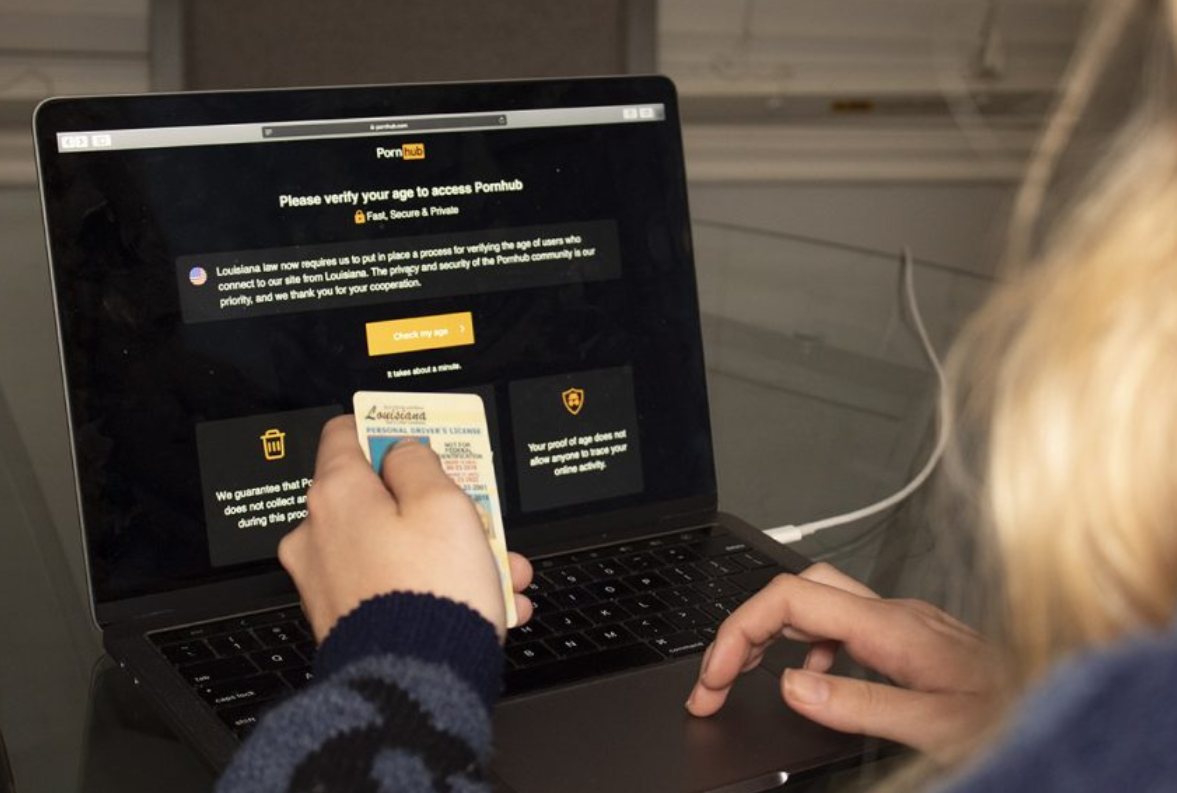Louisiana’s latest regulations regarding adult content has sparked a myriad of reactions – from those who laud its efforts in preserving morality to those who view it as a violation of personal freedoms. The new guideline, in its essence, sought to regulate the accessibility of explicit content, particularly in public spaces. However, an intriguingly effortless method has emerged to bypass these restrictions. This method utilizes a virtual private network, commonly known as a VPN.
A VPN functions as a digital veil, hiding your actual location and making it appear as though you’re accessing the internet from a different region. In the case of Louisiana’s adult content restrictions, a user can use a VPN to make it seem as though they are browsing from a state or country where such content is unrestricted. Thus, the user can view content that would otherwise be inaccessible in Louisiana.
It’s important to note that this isn’t a loophole within the system but rather a technological workaround that exploits the global nature of the internet. The VPN doesn’t modify or alter the content; it merely changes the perceived location of the user. However, the ethics surrounding the use of such a method are debatable considering the original intent behind the restrictions.
The use of a VPN is entirely legal and widely accepted for various purposes like securing data, accessing region-restricted content, or maintaining privacy. However, its usage to circumvent geographic restrictions on adult content raises ethical considerations. It’s crucial to remember that while this method might be technically feasible, it’s up to individual users to decide whether they should use it or not.
The introduction of Louisiana’s new guidelines on adult content has undoubtedly stirred up a debate about the balance between personal freedoms and societal norms. In an era where digital technology has blurred borders and made content universally accessible, it’s more critical than ever to consider our actions in the online sphere. While the VPN provides an astoundingly simple method to bypass these restrictions, it also underscores the complexities of navigating the digital world in light of evolving societal standards.
In conclusion, this astoundingly simple method to bypass Louisiana’s new adult content restrictions may seem like a boon for those frustrated with the new rules. However, it also raises important questions about the role of technology in our lives, the balance between personal freedom and societal norms, and the ethical implications of using such methods. Regardless of where one stands on this issue, the emergence of this method undoubtedly adds a new layer to the ongoing discussion about the regulation of adult content.

How Effortless It Really Is
Effortless, as a concept, can be quite misleading. Often, when we see someone accomplishing tasks with great ease, we are inclined to think it comes naturally to them, without any struggle or exertion. However, the truth is far from this perception. The ease and fluidity we observe is usually the result of countless hours of practice, numerous failures, and continuous learning. The apparent effortless performance is the culmination of the invisible effort invested over a significant period of time.
Take, for example, a professional athlete. When we watch them perform, their actions seem so seamless and effortless that we may be led to believe they were simply born with such abilities. However, behind this veneer of effortlessness lies an untold story of rigorous training, discipline, consistency, and perseverance. Their effortless performance is the fruit of their unwavering determination, commitment, and hard work.
Similarly, in any domain of life, whether it’s academic, artistic, or professional, the path to achieving effortlessness is laden with hard work, resilience, and tenacity. It is about mastering the art of doing something so perfectly that it becomes second nature. It’s about pushing one’s boundaries, stepping out of the comfort zone, and confronting and overcoming challenges.
In essence, effortlessness is not as effortless as it appears. It is a paradox that encapsulates the journey from laborious effort to effortless mastery. It is not about avoiding effort but embracing it to such an extent that it becomes invisible. It’s about transforming one’s weaknesses into strengths and making the impossible seem possible. So, the next time you witness an effortless performance, appreciate the unappreciated efforts that made it possible.

The Ineffectiveness of Proposed Solutions
Despite the well-intentioned efforts of policymakers and stakeholders, the proposed solutions to various societal issues often fall short of achieving their desired outcomes. Unintended consequences, inadequate understanding of the problem’s intricacies, and a lack of holistic, long-term planning often contribute to the inefficacy of these measures. For instance, in the realm of environmental policy, solutions such as carbon offsetting and the promotion of biofuels have been criticized for their limited impact and potential for exacerbating other issues, such as deforestation and food security.
On a social level, measures to alleviate poverty, like conditional cash transfers or job creation programs, have often been seen as insufficient as they fail to address systemic issues like educational inequality and social discrimination. In the realm of public health, despite the introduction of numerous preventative initiatives, epidemics continue to emerge due to factors such as inadequate health infrastructure and poor living conditions. Likewise, in the sphere of education, standardized testing as a measure to enhance student performance has been critiqued for its narrow focus, inability to accommodate diverse learning styles, and potential to exacerbate stress among students. In the economic sector, policies promoting deregulation and free-market capitalism have been accused of exacerbating income inequality and failing to prevent economic crises.
In each of these cases, the proposed solutions have proven to be ineffective, not necessarily due to a lack of effort or intention, but often due to a failure to fully comprehend the complexities of the problems at hand and to devise comprehensive, multi-faceted strategies that address them. Hence, it is crucial for decision-makers to adopt a more nuanced, systems-thinking approach to problem-solving, taking into account the multitude of factors at play and the potential ripple effects of their proposed solutions.

Why the Approach Falls Short
While the approach might seem promising on the surface, it falls short in a few critical areas. Firstly, it fails to adequately consider the complexity and diversity of situations it is meant to address. The one-size-fits-all methodology it is based on tends to oversimplify matters, ignoring the unique nuances and variables that each individual case presents. This results in solutions that may work in principle but fall flat when implemented in real-world scenarios. Secondly, the approach is often overly theoretical, focusing too much on abstract concepts and not enough on practical application.
This disconnect between theory and reality renders it largely ineffective. Thirdly, it lacks flexibility, making it ill-suited to adapt to unforeseen circumstances or sudden changes in the situation. This rigidness can lead to poor outcomes and missed opportunities. Finally, the approach is often reactive rather than proactive. It waits for problems to arise before addressing them, instead of anticipating potential issues and taking preventative measures. This reactive nature can result in delays, inefficiencies, and a general lack of foresight. In conclusion, while the approach may have its merits, its shortcomings in areas such as complexity, practicality, flexibility, and proactivity ultimately cause it to fall short of expectations. Increased attention to these areas could potentially enhance its effectiveness and lead to better outcomes.
